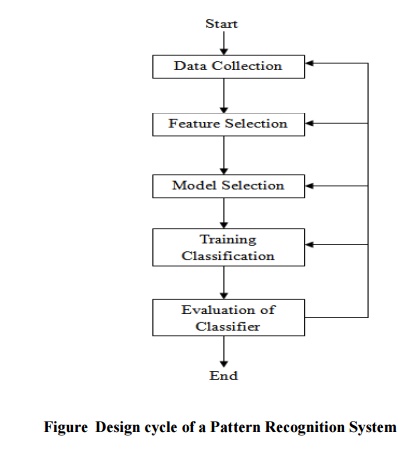Chapter: Artificial Intelligence
Pattern Recognition
PATTERN RECOGNITION
Pattern recognition as a field of study developed significantly in the
1960’s. It was very much interdisciplinary subject, covering developments in
the areas of statistics, engineering, artificial intelligence, computer
science, psychology and physiology, among others. Some people entered the field
with a real problem to solve. The large numbers of applications ranging from
the classical ones such as automatic character recognition and medical diagnosis
to the more recent ones in data mining (such as credit scoring, consumer sales
analysis and credit card transaction analysis), have attracted considerable
research effort, with many methods developed and advances made. Pattern
recognition of the objects into a lot of categories or classes. It is an
integral part in most machine intelligence system built for decision making.
The nature of the pattern recognition is engineering. But the final aim of
pattern recognition is to design machines to solve the gap between application
and theory. It is a process of identifying a stimulus. This process is often
accomplished with incomplete of ambiguous information. The basic model of
pattern classifiers is shown in figure.

Figure A common Pattern
Classifier
A complete pattern recognition system consists of:
(a) A sensor: It gathers the information to be classified.
(b) A feature selector or Extractor: Feature selection is the process of
selecting a subset of a given set of variables. The feature extractor mechanism
takes a possible non linear combination of the original variables to form new
variables.
(c) A classifier: It classifies or describes the observations relying on the
extracted features.
To understand the problem of designing a pattern recognition system, we
must understand the problems that each of these components must solve.
Different components of the pattern recognition system are sensing,
segmentation, feature extraction, classification, post processing. The input to
a pattern recognition system is some kind of a transducer, such as camera or a
microphone array. Sensing is used to eliminate the noise. A sensor converts
images or sounds or other physical into signal data. The segmentor isolates
sensed objects from the back ground or from other objects. A feature extractor
measures object properties that are useful for classification. The goal of
feature extractor is to characterize on object to be recognized by measurements
whose values are very similar for objects in the same category and for objects
in different categories very different. The task of feature extractor is domain
dependent and requires the knowledge of the domain. The task of the classifier
component proper of a full system is to use the feature vector provided by the
feature extractor to assign the object to a category. The classifier uses the
features to assign the sensed object to a category. The post processor uses the
output of the classifier to decide on the recommended action.

The design cycle of a pattern recognition system entails the repetition
of a number of different activities training and evaluation. A structure of the
design cycle of a pattern recognition system is illustrated in figure .

Data collection can account for large part of the cost of developing a
pattern recognition system. The selection of some separate distinguishable
features depends on the characteristics of the problem domain. In selecting
features, we would like to find features that are simple to extract, invariant
to irrelevant transformation and useful to discriminating patterns in different
categories. The selections of models are done by the different descriptions,
which are in mathematical form. The training process uses some or all of the
data to determine the system parameters. Different types of training protocols
are stochastic, batch and online. Evaluation is needed to measure the
performance of the system and to identify the need for improvements in its
components. There are two main divisions of classification in pattern
recognition like supervised classification and unsupervised classification. In
supervised classification, we have a set of data samples (each consisting of
measurements on a set of variables) with associated labels, the class types.
These are used as exemplars in the classifier design. In unsupervised
classification, the data are not labeled and we seek to fine groups in the data
and the features that distinguish one group from another.
Related Topics